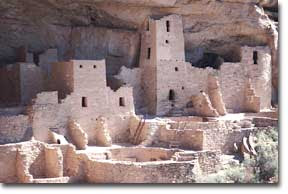Here are a few video clips which show how to take maximum advantage of the sun's light and heat using passive solar energy designs:
Friday, May 9, 2008
Passive Solar Energy Designs
Posted by Mariya at 3:48 PM 0 comments
Labels: passive solar energy
Thursday, May 1, 2008
Passive Solar, Active Solar and Photovoltaics
Posted by Mariya at 3:26 AM 0 comments
There are three different ways to harness the sun's energy: passive solar, using architectural design and natural materials to absorb the sun's energy; active solar, utilizing the sun's heat by means of solar collectors; and a third way in which solar energy can be harnessed is through the use of photovoltaic systems.
Passive solar is the capturing and storing the suns' energy - light and heat - without the use of any mechanical devices. As the solar radiation strikes windows, walls, floors, and other objects within the room it is converted to heat. A good example of a passive solar energy system is a greenhouse.
Active solar uses devices to collect, store, and circulate heat produced from solar energy. Active solar energy technologies convert sunlight into heat by using a particular energy transfer fluid. This is most often water or air but can also be a variety of other substances.
Photovoltaic systems directly convert sunlight into electricity using a semiconductor material such as silicon. The electrical energy from PVs can be stored in batteries for use when there is no sun (during cloudy days or at night).
Thursday, April 24, 2008
Solar Energy and the Ancient World
Posted by Mariya at 3:08 PM 1 comments
From ancient time people have also used solar energy for drying, cooking, heating baths and warming their homes. Without electricity, mankind learned to orient their buildings to capture the heat of the sun during the day.
The Greeks were the first to use solar architecture, over 2,000 years ago. They learned to build their houses to take maximum advantage of the solar energy. The sun's rays entered their homes during the winter, but weren't able to enter during the summer. There were entire cities built this way. The Romans, Egyptians, Chinese, and Native Americans also warmed their homes through passive solar energy designs. Anasazi Indians build cliff dwellings with southern exposures, providing passive solar heating and cooling.
The Romans first of all put glass in windows, which allowed the sun's light to pass through but trapped its heat. They even built glass greenhouses so they could have fresh fruits and vegetables all winter.



